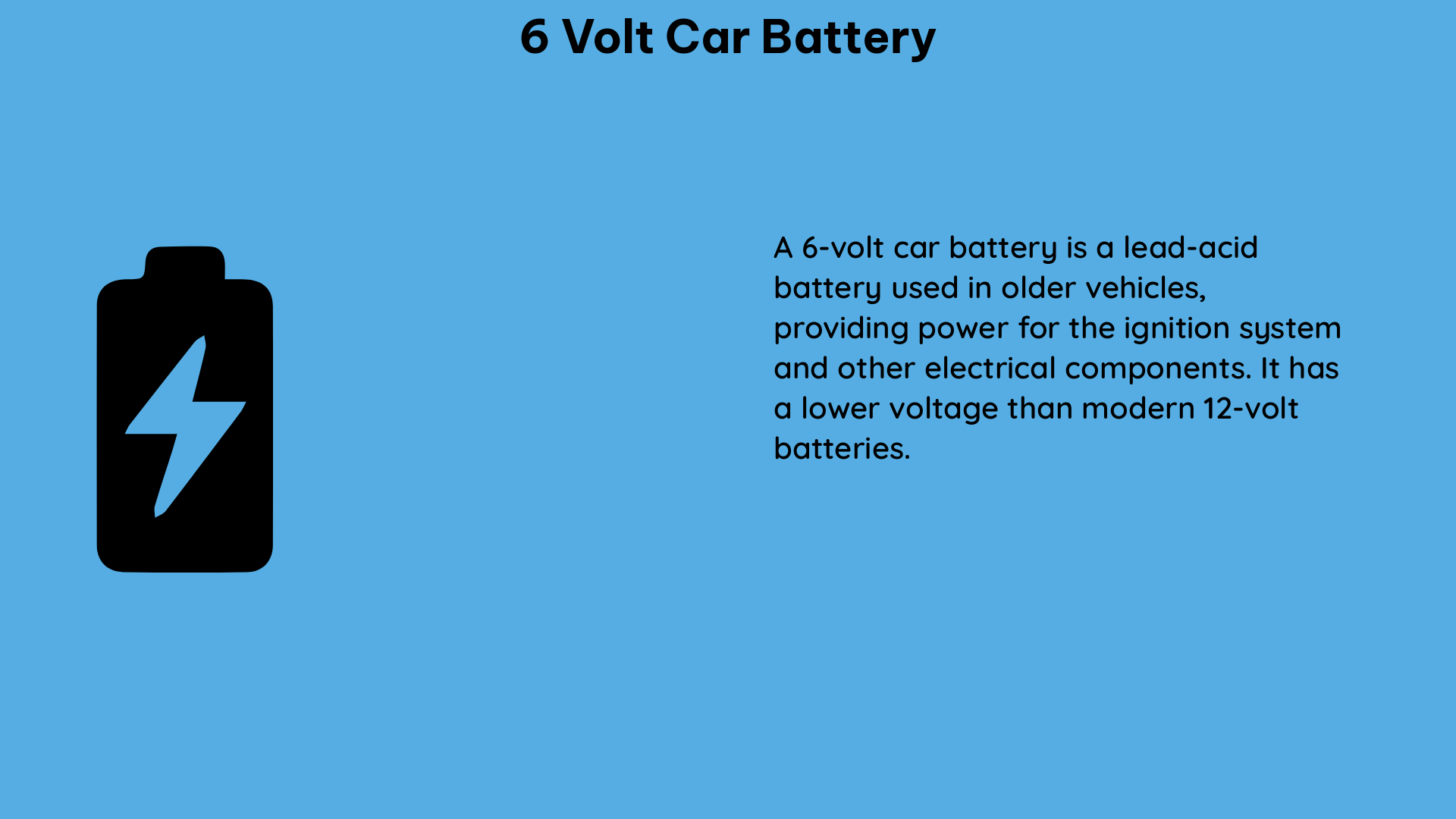When it comes to powering classic cars, golf carts, and other vintage vehicles, the trusty 6 volt car battery remains a popular choice. These batteries offer a unique set of characteristics that set them apart from their more common 12 volt counterparts. In this comprehensive guide, we’ll dive deep into the world of 6 volt car batteries, exploring their technical specifications, charging and discharging practices, and strategies for maximizing their lifespan.
Understanding 6 Volt Car Battery Voltage and State of Charge
The voltage of a 6 volt car battery is, as the name suggests, nominally 6 volts. However, this voltage can fluctuate depending on the battery’s state of charge (SOC) and the load being applied. A fully charged 6 volt battery will typically read between 6.37 and 6.42 volts when measured with no load. As the battery discharges, the voltage will gradually decrease, with a 50% SOC battery reading around 6.15 volts and a 20% SOC battery reading approximately 5.9 volts.
It’s important to note that these voltage readings are only accurate when the battery is in a rested state, meaning it has been disconnected from any loads or chargers for at least 30 minutes. When under load, the battery’s voltage will sag due to its internal resistance. For example, a 6 volt battery with a 50 amp load may see its voltage drop from 6.37 volts to 6.12 volts.
The internal resistance (Ri) of a 6 volt battery can vary depending on the battery type and condition. A new Trojan flooded lead-acid (FLA) battery may have a Ri of around 0.005 Ohms, while a well-maintained absorbed glass mat (AGM) battery may have a Ri between 0.0007 and 0.002 Ohms. This difference in internal resistance can significantly impact the voltage sag under load, with the AGM battery experiencing less voltage drop than the FLA battery.
Measuring State of Charge and Capacity

Accurately determining the state of charge (SOC) of a 6 volt battery is crucial for proper maintenance and charging. While voltage measurements can provide a rough estimate, the most accurate method is to use a lab-quality temperature-compensated hydrometer. This device measures the specific gravity of the battery’s electrolyte, which directly correlates to the SOC.
It’s important to note that while a hydrometer can accurately determine the SOC, it does not provide information about the battery’s overall capacity. To assess the battery’s capacity, you’ll need to perform a load test, which involves applying a specific load to the battery and measuring the time it takes for the voltage to drop to a predetermined level.
Charging and Discharging 6 Volt Car Batteries
When charging a 6 volt car battery, it’s recommended to stop the charging process once the voltage reaches 7.2 volts. Continuing to charge beyond this point can lead to overcharging, which can damage the battery and reduce its lifespan.
Before charging, it’s also important to ensure that the battery is fully discharged. A loaded 6 volt battery will typically hold around 6 volts for an extended period during discharge, but it’s crucial to avoid discharging the battery below 4.0 volts to prevent permanent damage.
When it comes to the charging process, a constant-current, constant-voltage (CC-CV) charger is the preferred method for 6 volt batteries. These chargers maintain a constant current until the battery reaches the desired voltage, at which point they switch to a constant-voltage mode to prevent overcharging.
Maximizing the Lifespan of 6 Volt Car Batteries
To extend the lifespan of your 6 volt car battery, it’s essential to follow proper maintenance practices. This includes regularly checking the battery’s voltage, cleaning the terminals, and ensuring that the battery is properly secured in the vehicle.
Additionally, it’s important to avoid leaving the battery in a discharged state for extended periods, as this can lead to sulfation and reduced capacity. If the battery is going to be stored for an extended period, it’s recommended to charge it to a full state of charge and disconnect it from the vehicle.
Conclusion
6 volt car batteries may be less common than their 12 volt counterparts, but they remain an essential component for powering classic vehicles and specialty applications. By understanding the technical specifications, charging and discharging practices, and maintenance strategies outlined in this guide, you’ll be well-equipped to keep your 6 volt car battery in top condition and maximize its lifespan.
References:
- Testing 6 Volt Batteries
- Ask an Expert: Using 6 Volt Batteries
- Using 6 Volt Batteries
- 6 Volt Battery Discharge Curve
- 6 Volt Battery Charging and Discharging

The lambdageeks.com Core SME Team is a group of experienced subject matter experts from diverse scientific and technical fields including Physics, Chemistry, Technology,Electronics & Electrical Engineering, Automotive, Mechanical Engineering. Our team collaborates to create high-quality, well-researched articles on a wide range of science and technology topics for the lambdageeks.com website.
All Our Senior SME are having more than 7 Years of experience in the respective fields . They are either Working Industry Professionals or assocaited With different Universities. Refer Our Authors Page to get to know About our Core SMEs.